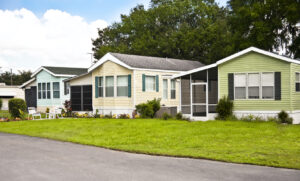
A new Housing Perspectives Blog post by Chadwick Reed of the Joint Center for Housing Studies at Harvard University discusses how homeownership is becoming increasingly inaccessible for low- and middle-income households and what can be done to mitigate this emerging problem.
According to Reed, while land costs are a driving force in this trend, more to blame is the cost of construction—including labor—pre- and on-site manufactured housing offers a potential, and more so reliable, solutions to rising construction costs as they offer significant price advantages on the housing side of things.
Given the benefits of manufactured housing, Reed and his colleagues suggest that policymakers, from federal officials down to local housing and zoning boards, take steps to promote more widespread adoption of this type of housing as an affordable alternative to site-built housing for aspiring homebuyers.
However, many will have to overcome the issue that manufactured housing are just “trailer homes” and are treated as such by residents and governments alike across the country, even though safety and building standards on them are higher than the average trailer home.
Historically, singe- and double-section homes have constituted the vast majority of manufactured housing solid in the U.S. which is shipped to the site in one or two sections, respectively. However, a new option, called a “CrossMod” (which is currently only offered by one company starting in 2019) offers a notable step forward in manufacturing housing as it appears like a more traditional single-family home, which may sway some cities views on manufactured housing. This type of housing is estimated to cost between 35-73% of a traditional home.
“While the cost of land is excluded from this analysis, the paper does acknowledge that land prices play a major role in home affordability. Specifically, as land prices increase, the proportional cost advantage of manufactured homes decreases,” Reed said. “When factoring in the median value of a finished lot, the cost of manufactured housing relative to site-built falls to 54% for single-section homes, 70% for double-section, and 80% for CrossMods. As such, we suggest that manufactured housing may be most attractive in markets with lower land costs, but still offers savings regardless of land cost.”
“Our findings suggest that manufactured housing is a viable alternative to site-built housing which, in the face of increased barriers to homeownership nationwide, could be more widely utilized,” Reed continued. “Moving forward, policymakers, housing organizations, and industry stakeholders should consider the findings of this study to promote and support the expansion of manufactured housing as an affordable housing option.”
“By addressing regulatory barriers, improving financing options, and increasing awareness about the cost advantages of manufactured homes, more homeownership opportunities can be created for low- and moderate-income households,” Reed concluded in his post. “The potential benefits of manufactured housing should not be overlooked, and concerted efforts should be made to leverage this promising solution to address the affordable housing crisis in our communities.

 theMReport.com Your trusted source for mortgage banking news
theMReport.com Your trusted source for mortgage banking news








